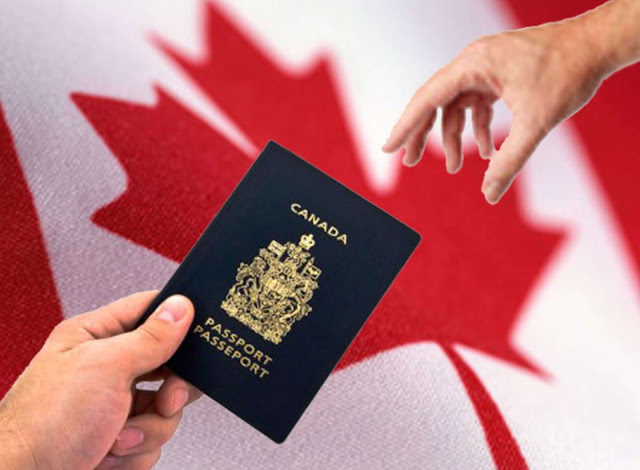Immigration and Racism
During the First World War, anti-German hysteria erupted in Canada, directed largely against immigrants born in the now enemy countries or those who entered Canada as subjects of enemy monarchs, but also against foreigners who had been born in now allied countries or had come to Canada as subjects of allied monarchs.
Despite Canadian military manpower needs, British and Canadian authorities alike felt that, where possible, foreigners belonged in foreign armies. Groups such as Italians, Serbians, Poles and some Jews were encouraged to return to the armies of their mother country or were recruited into specific British army units reserved for allied foreigners of various origins. Without national armies of their own to join, many Jews, Macedonians and Ukrainians volunteered for the Canadian Army.
Once in Canada, many thousands of immigrants did find a place for themselves and their families, but Canadian immigration policy and administration, which bowed to economic necessity by allowing these southern and eastern Europeans into Canada, could not bend enough to admit other would-be immigrants.
Head taxes, landing taxes, bilateral restriction agreements and travel restrictions virtually prohibited the immigration of Asians. Canadian authorities refused to allow the settlement of female Asian immigrants, fearing this would encourage Asian men temporarily in Canada as railway or mine labourers to settle permanently and, perhaps more importantly, become the parents of yet another generation of the "yellow peril."
In 1914 almost 400 East Indians aboard the immigrant ship Komagata Maru languished in Vancouver harbour while Canadian authorities debated what to do with them. Canada's new navy, in action for the first time, escorted the ship from Canadian waters while many Vancouver residents cheered approvingly from shore.
In 1910 and 1911, rumours had spread that a group of Blacks was preparing to migrate to central Alberta. Descendants of freed slaves, they were being pushed from their land in Oklahoma territory, where they had been granted holdings and hoped to build new lives. See “Deemed Unsuitable.”
Public and political response in Alberta was immediate and predictable. Federal authorities initiated an ingeniously simple scheme. Nothing in the Immigration Act specifically barred Black Americans, but any immigrant could effectively be denied access to Canada for health reasons under the Act's medical provisions. The government merely instructed immigration inspectors and their medical aides along the American border to reject all Blacks as unfit for admission on medical grounds. There was no appeal. Blacks were warned they should not waste their time and money by considering immigration to Canada.
Despite Canadian military manpower needs, British and Canadian authorities alike felt that, where possible, foreigners belonged in foreign armies. Groups such as Italians, Serbians, Poles and some Jews were encouraged to return to the armies of their mother country or were recruited into specific British army units reserved for allied foreigners of various origins. Without national armies of their own to join, many Jews, Macedonians and Ukrainians volunteered for the Canadian Army.
Once in Canada, many thousands of immigrants did find a place for themselves and their families, but Canadian immigration policy and administration, which bowed to economic necessity by allowing these southern and eastern Europeans into Canada, could not bend enough to admit other would-be immigrants.
Head taxes, landing taxes, bilateral restriction agreements and travel restrictions virtually prohibited the immigration of Asians. Canadian authorities refused to allow the settlement of female Asian immigrants, fearing this would encourage Asian men temporarily in Canada as railway or mine labourers to settle permanently and, perhaps more importantly, become the parents of yet another generation of the "yellow peril."
In 1914 almost 400 East Indians aboard the immigrant ship Komagata Maru languished in Vancouver harbour while Canadian authorities debated what to do with them. Canada's new navy, in action for the first time, escorted the ship from Canadian waters while many Vancouver residents cheered approvingly from shore.
In 1910 and 1911, rumours had spread that a group of Blacks was preparing to migrate to central Alberta. Descendants of freed slaves, they were being pushed from their land in Oklahoma territory, where they had been granted holdings and hoped to build new lives. See “Deemed Unsuitable.”
Public and political response in Alberta was immediate and predictable. Federal authorities initiated an ingeniously simple scheme. Nothing in the Immigration Act specifically barred Black Americans, but any immigrant could effectively be denied access to Canada for health reasons under the Act's medical provisions. The government merely instructed immigration inspectors and their medical aides along the American border to reject all Blacks as unfit for admission on medical grounds. There was no appeal. Blacks were warned they should not waste their time and money by considering immigration to Canada.



Comments
Post a Comment